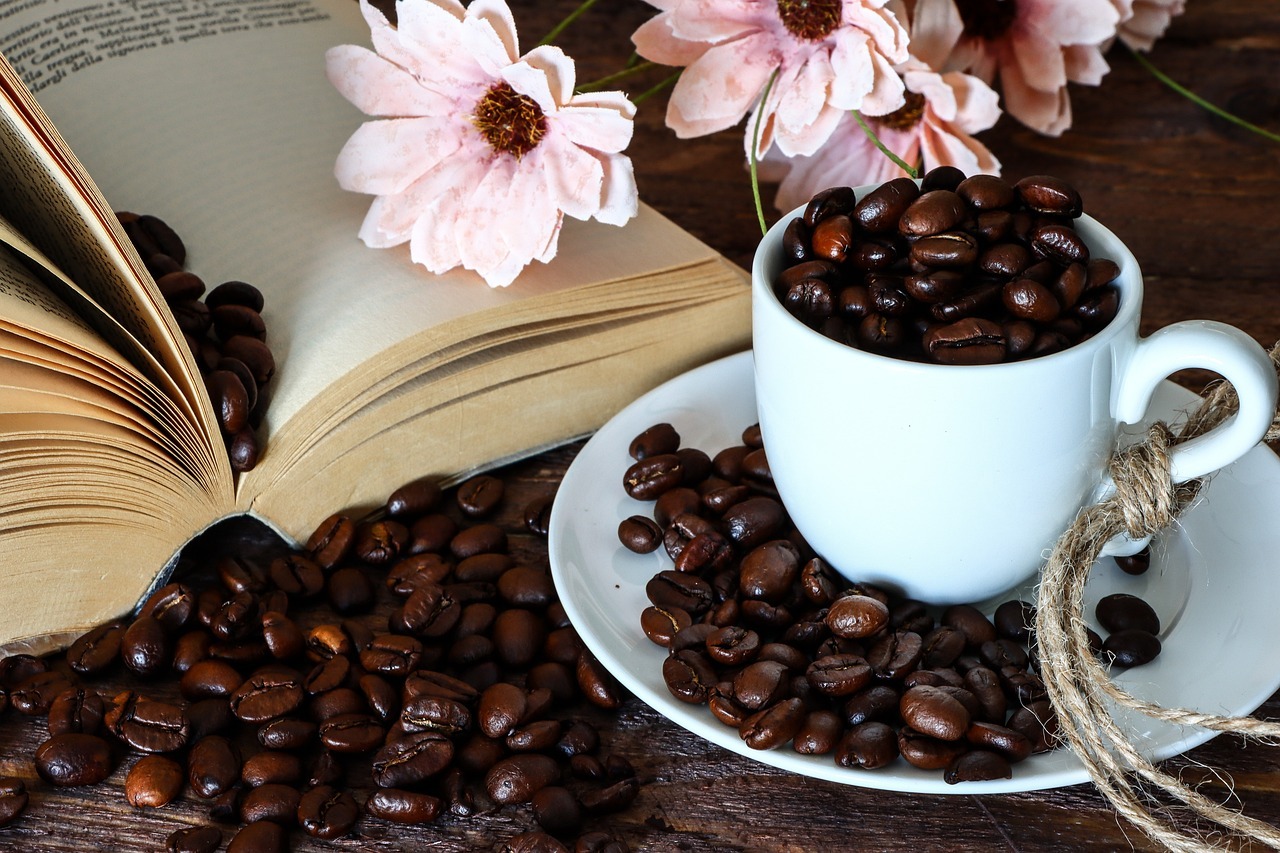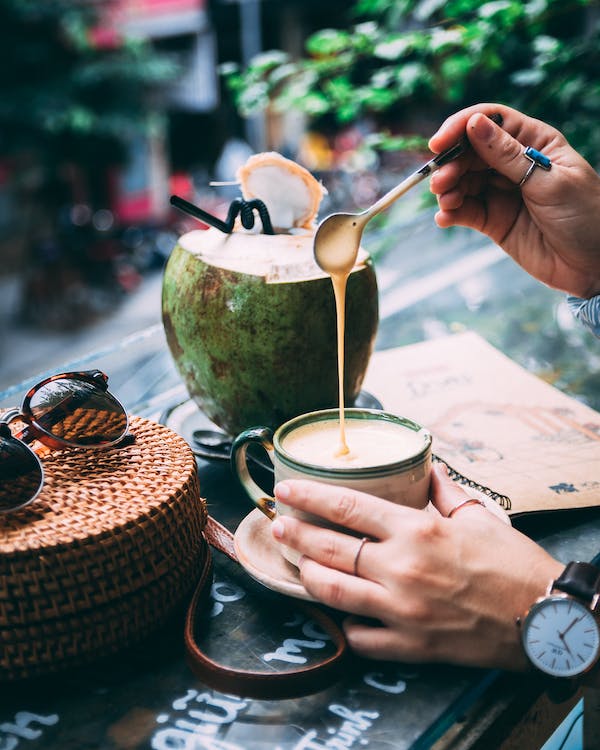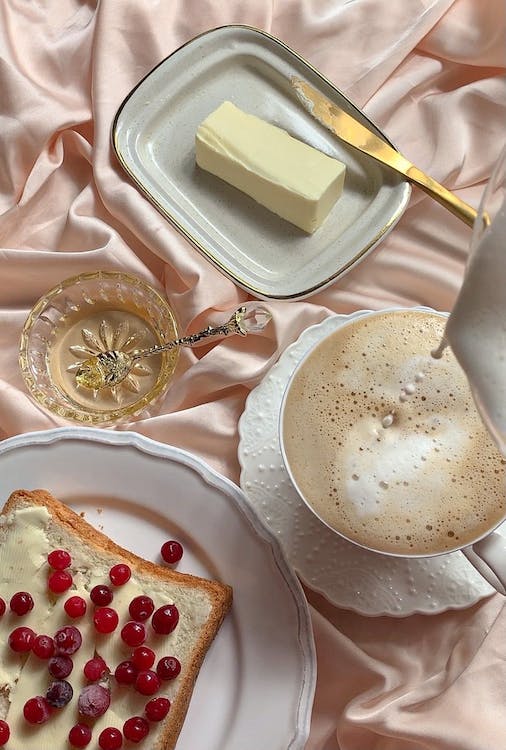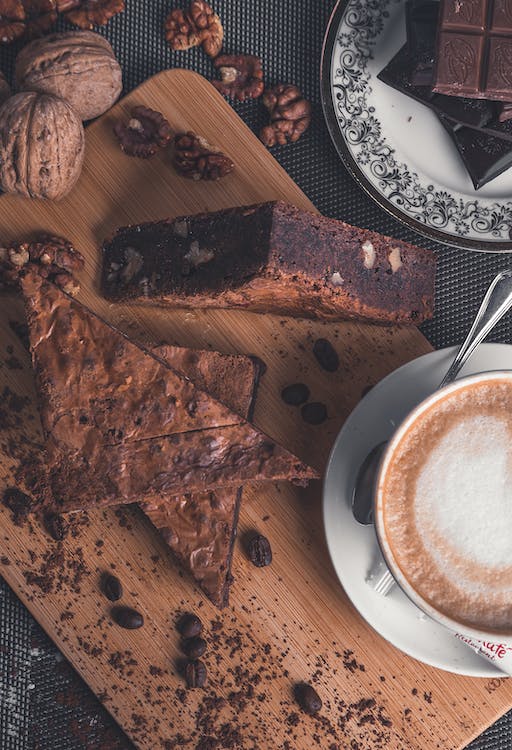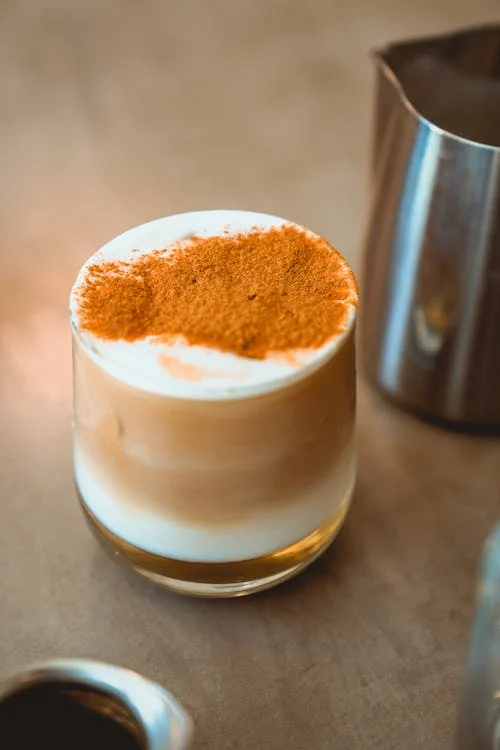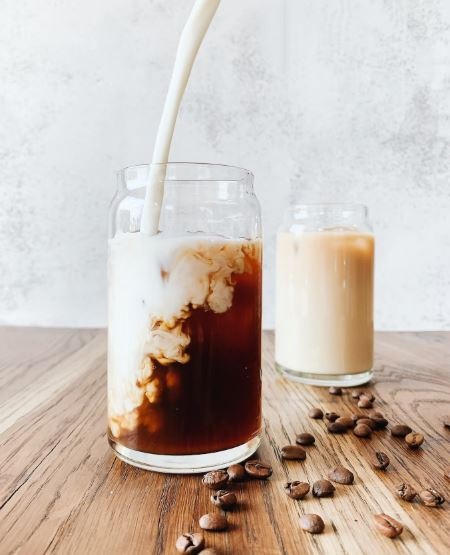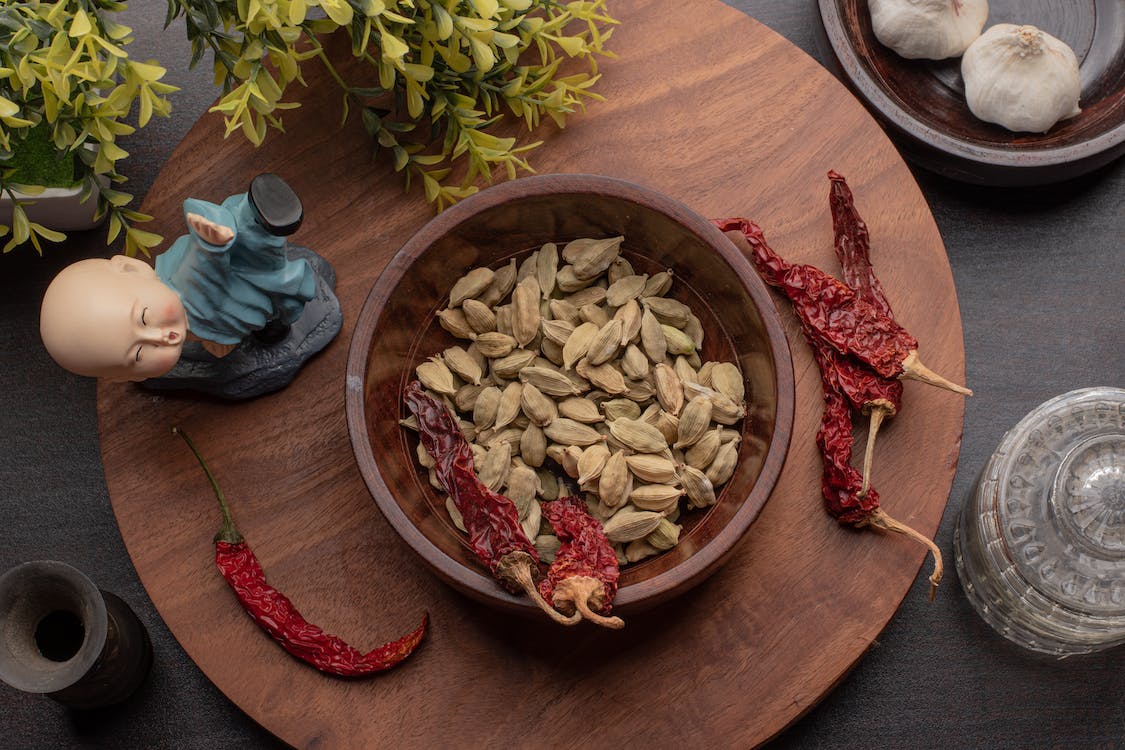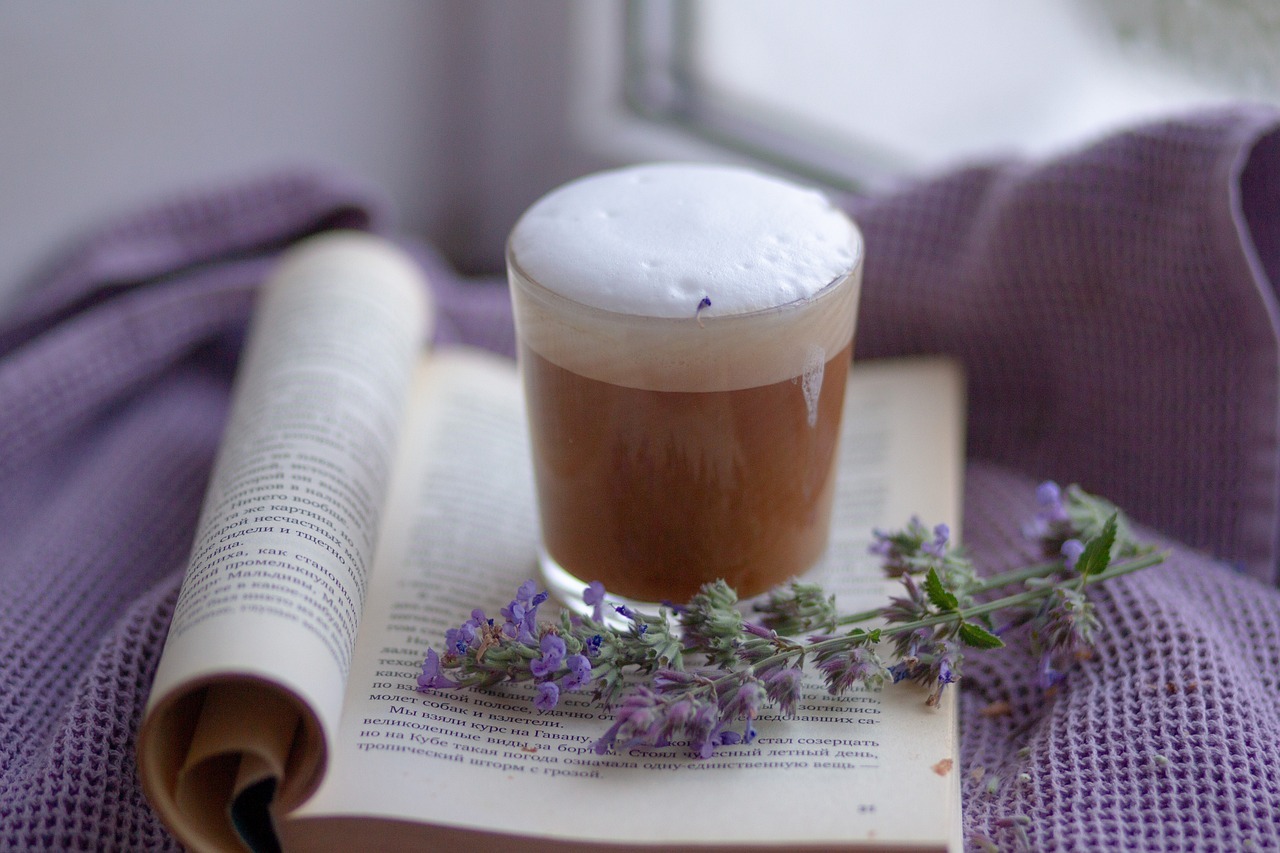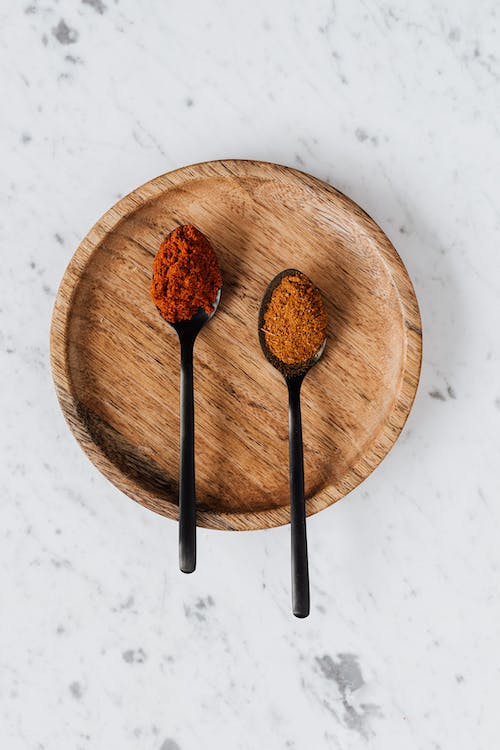Even while coffee has a wonderful flavor on its own, there are times when you just want to add something extra special. There are a lot of ingredients that can give the typical coffee a nutritious boost or a fiery seasonal flair. Coffee is adaptable, can be blended with other ingredients, and has the potential to surprise even the most ardent coffee enthusiasts with what it can do. However, nothing matches the exquisite simplicity of a decent coffee made in greca and served in your favorite cup.
There are few joys greater than preparing the morning’s first cup of coffee by grinding the coffee beans, adding hot water to your French press, and then patiently waiting for the dark brown liquid to appear. But what should you do if you want to improve your morning cup of coffee? A sophisticated coffee maker or fresh beans are not necessary parts of the answer. All you need to do is use your imagination with the spices that are likely already lying about the kitchen.
Coconut oil
Thanks to health advantages including enhanced cognitive function, weight loss, and antimicrobial characteristics, coconut oil has grown in popularity in recent years. But coconut oil in coffee provides more than just a nutritional boost. It yields a delicious creamy texture and light coconut flavor that you can enhance further with a touch of coconut milk.
It can help you achieve or sustain ketosis, a metabolic state when your body burns molecules created from fat breakdown as fuel rather than the sugar glucose. On a ketogenic diet, staying in ketosis has been related to health advantages like weight loss, better blood sugar regulation, and lowered risk factors for heart disease.
Butter
If you often drink coffee on an empty stomach, adding a pat of butter to your coffee can offer a decent dose of healthy fat to your diet first thing in the morning. As a result, you have more energy and avoid a coffee crash. Butter also adds a rich, latte-like creaminess to your coffee.
Butter in coffee and tea is not a recent diet craze or trend; rather, it has been practiced in one way or another by many different civilizations all over the world. Asian nations like Tibet have yak butter tea known as po cha, Singapore has nanyang kopi, and Vietnam has giang café, which also contains butter and an egg. Ethiopians specifically use clarified butter in their cup of coffee in the Sidamo area!
Although the precise length of time these beverages have been around in these nations is uncertain, it is known that they before the popularization of the keto-related butter coffee drink in Europe and the Americas.
Salt
You may effectively get rid of the unpleasant bitterness that certain coffees have or make up for faulty brewing water by adding salt to your coffee grinds. In truth, it has long been customary in some coastal areas to make coffee using salty water. As the salt can replace the sodium you lose when drinking coffee, it can even be a good decision.
Flavor Extracts
A tasty new twist! Syrups are frequently used to flavor coffee, however coffee enthusiasts who are fanatical about the bitter taste are put off by this. Vanilla, almonds, coconut, orange, and chocolate are just a few of the numerous flavor extracts that go great with the correct coffee. They are essentially devoid of nourishment, which makes them a fantastic calorie- and sugar-free option to perk up your coffee. Consider adding a dash of vanilla essence to your daily coffee, or try one of these easy DIY coffee syrups.
Making a mocha coffee with the ideal amount of sweetness and nicely flavored with chocolate extract is a terrific idea. Or you can make a coffee with cinnamon buns for a creative take on a traditional breakfast. You only need to add a little cinnamon essence and your preferred cream to create a delicious treat in a cup. To prevent overwhelming the coffee, add extracts to coffee 1/4 of a teaspoon at a time and taste it before adding more.
Cocoa powder
Though it has long been adored for its flavorful richness, research is increasingly uncovering chocolate’s beneficial health attributes. Even more antioxidant-rich than red wine or green tea is cocoa powder. Your blood pressure is lowered as a result.
The simplest form of chocolate is cocoa nibs, commonly referred to as cacao nibs. The small shards are simply packed, tiny chunks of dried cacao beans. Although they resemble chocolate, they don’t include the emulsifiers, milk, or sugar that are present in processed chocolate. They’re crunchy, bitter, and may not be something you want to eat.
They don’t have much sweetness, but they do have a diverse taste profile with hints of fruit, nuts, and the earth. Cocoa nibs are the ideal coffee addition for fans of mocha since they strongly evoke dark chocolate when mixed with other ingredients. Use your coffee grinder to blend 1/4 teaspoon of cocoa nibs with 1/3 of an ounce of coffee beans to produce a cup of this delectable delight. After blending them, prepare your coffee as usual. Add some heated milk and chocolate syrup to the rim of your cup for the whole mocha experience.
Non dairy milk
Recent years have seen a rise in the demand for non-dairy milk, which now includes “milk” made from oats, soy, almonds, cashews, hazelnuts, and other substances. Every one offers a different combination of tastes, minerals, and vitamins, but they may all be a delectable and healthful addition to your morning coffee.
Cardamom
In India and the Middle East, cardamom is a warming spice that has a long history of use as a coffee flavoring. Its taste is a perfect complement to coffee’s fruity and bittersweet flavor. It is high in antioxidants, and research suggests that it may help with digestion, reduce inflammation, and prevent cancer.
Most likely, there is a jar of cardamom collecting dust at the back of your cabinet. Even while you might occasionally take it out to create cardamom blueberry muffins, it’s likely that you only give this classic Indian spice a cursory glance.
This slightly flowery, lemony, and peppery spice goes great with coffee. Due to the subtle spice it adds, it is frequently used in Arabic and Turkish coffee. Cardamom is available in several foams, from pods to essential oil. We advise using green powder or pods when putting it in coffee. Mix a few pods with your normal coffee beans in your grinder if you plan to use them. Continue brewing the coffee as normal after that. Short on time? Crush a few pods, then add the ground coffee right away.
Cinnamon
When making a cinnamon coffee, topping a cappuccino with a sprinkle, or partaking in the fall trend of pumpkin spice lattes, cinnamon is a spice that is harvested from the inner bark of a tropical plant.
Cinnamon enhances food in more ways than just flavor; studies have shown that it lowers cholesterol and regulates blood sugar. A touch of nutmeg or a sprinkling of cinnamon may elevate your ordinary cup to the level of a café masterpiece. We discuss several spices you may add to your daily cup of coffee in this post. Along with providing you with a detailed flavor description for each spice, we also offer combination suggestions and discuss some potential health advantages. So make sure to keep reading if you’re ready to give your coffee a fresh twist.
The pairing of cinnamon and coffee is one that anybody can understand. In fact, it’s likely that you’ve been adding cinnamon to your cappuccino unconsciously. While adding a sprinkle of cinnamon as a finishing touch is good, you’re missing out on the sweetness and warmth of this fragrant spice unless you’re blending it with freshly ground coffee beans.
Start with medium- or dark-roast coffee beans to brew the ideal cinnamon coffee. Roasting often also releases aromas of nuts, caramel, and chocolate, all of which go really well with cinnamon. On the coffee machine or pour over, add ground coffee and ground cinnamon. Enjoy the sweet, woody taste notes after the coffee has had time to brew. Six cups of coffee can be spiced up with half a teaspoon of cinnamon, but you may always add more if you like a stronger flavor.
French vanilla
A traditional coffee flavor that delivers a delicate and pleasant taste is french vanilla. Its fragrant flavor improves traditional morning-fueling drinks and decaf mixes. Vanilla and coffee together isn’t really innovative. This does not apply to flavored beans or artificial syrups. Instead, think about blending pure vanilla essence or vanilla beans with coffee.
Vanilla beans and vanilla extract provide coffee a delicious, creamy flavor without the added calories and strange aftertaste of their synthetic equivalents. One vanilla bean will do when using full vanilla. For the most fragrant cup of coffee your kitchen has ever seen, simply ground it up with the coffee beans and then brew everything together. Before sipping, add a few drops of vanilla essence to your cup. Vanillin, a plant molecule that is recognized for its antioxidant, anti-inflammatory, and neuroprotective effects, is present in vanilla, which has health advantages.
Maple syrup
An alternate sweetener to sugar is maple syrup. The deep and sweet flavor of maple flavour, which is increasingly in demand, goes well with various coffee drinks.
Similar to honey, maple syrup may be a very sweet yet healthier substitute for sugar. Popular, especially in Canada, maple syrup can be used for flavor as well as sweetness.
The rich, velvety sweetness of maple syrup pairs beautifully with the tastes of coffee. It has nutrients and minerals including calcium, magnesium, zinc, and potassium that are absent from refined white sugar. Because it doesn’t need to dissolve, it makes a terrific complement to cold coffee beverages. Try adding it to cold brew or make an iced maple latte.
Ginger
Ginger’s warmth and spice evoke all kinds of Christmas memories, including making gingerbread homes and dipping ginger cake into a hot cup of cocoa. By adding ginger to your usual cup of coffee, you may capture some of this seasonal charm.
You may flavor your coffee with either fresh or dried ginger, depending on what you have on hand. Before preparing your coffee, sprinkle a couple slices of fresh ginger over the coffee grounds. Add one teaspoon of ginger powder for every six tablespoons of coffee if using.
Ginger not only makes a typical cup of coffee taste better, but it also has a variety of health advantages. Menstrual pains, indigestion, and nausea can all be eased with ginger. Additionally, it promotes blood sugar homeostasis, which will offer you an extra energy boost without the need for additional caffeine.
Nutmeg
Nutmeg transforms your ordinary cup of coffee into a fragrant seasonal blend with its warm, slightly spicy flavor. Although you’ll undoubtedly taste the difference, nutmeg’s presence is more noticeable on the nose, where it emits a somewhat sweet, nutty smell.
Nutmeg pairs well with coffees that already have some spice in them since its flavor and scent may be rather strong. You run the danger of overwhelming the coffee if you pick a milder mix. On a similar topic, watch carefully for the amount of nutmeg you use. You should just need a dash each cup to flavor your coffee without making it taste bad.
Nutmeg has a great flavor and aroma, but it also has potential health advantages. The spice includes anti-inflammatory and antioxidant chemicals, both of which have been demonstrated in animal experiments to regulate blood sugar and improve mood.
Saffron
Being the most costly spice in the world, saffron may cost anywhere between $10 and $20 per gram. In fact, due to their exorbitant cost, the scarlet threads from the crocus sativus plant are sometimes called “red gold.” Even while the price may put some people off, just a pinch may transform a simple cup of coffee.
To put it mildly, Middle Eastern spices are complicated. On the one hand, it tastes earthy and sweet, like honey and flowers. It is, however, a little bit bitter. Although it will be difficult to distinguish all of the flavor characteristics, saffron and coffee go together brilliantly. Make a cup of espresso to start the easy saffron coffee preparation. Add some honey and steaming milk. After that, whisk in a few crushed saffron threads. Add some milk froth on top to complete.
Lavender
Springtime are rarely brought up on coffee flavors. Lavender is one of the season’s most unique tastes and a strong contender to take the place of your caramel macchiato or vanilla latte when the weather heats. It has characteristics that are sweet, flowery, and somewhat bitter.
Putting flowers in coffee does seem a bit odd. But take into account that many coffee mixes have flowery undertones. An often-overlooked taste note can be improved by incorporating another flowery flavor. Lavender not only compliments bright, zesty blends from Kenya and Ethiopia but also flowery coffees. Making syrup from fresh lavender, sugar, and water is one technique to use lavender in coffee. After 10 minutes of simmering, drain off the lavender, let the liquid cool to room temperature, and then stir it into a cup of coffee. Include some honey, milk, and heavy cream while making a lavender latte if you really want to go all out.
Cayenne pepper
Even a double espresso won’t always be enough to wake you up in the morning. Consider putting some cayenne pepper in your coffee when you’re very exhausted and need something extra to wake up. We suggest pairing it with coffee varieties that have chocolate undertones. This combination functions effectively because cayenne pepper enhances the nutty, citric, and fruity flavors of chocolate mixtures.
You could be surprised by cayenne as with coffee flavour. It is popular in several Middle Eastern and Central American nations, where it is frequently combined with milk, sugar, or chocolate. It is strong in antioxidants, speeds up metabolism, and is good for blood circulation, much like all spicy peppers.
There are two methods to spice up your coffee, if you’re feeling daring. The first involves brewing coffee grounds with a dash of cayenne pepper that has been pulverized. As an alternative, you may add a dash of cayenne pepper to a cup of coffee or espresso that has already been made. Although there is nothing wrong with drinking this combination black, adding little milk can lessen the heat.
Conclusion
Even if you actually like coffee, there will undoubtedly be moments when the flavor does get a little boring and you just need to vary it up. It turns out that there is a wide range of coffee boosters available, and the greatest thing is that they’ll really increase your caffeine game.

